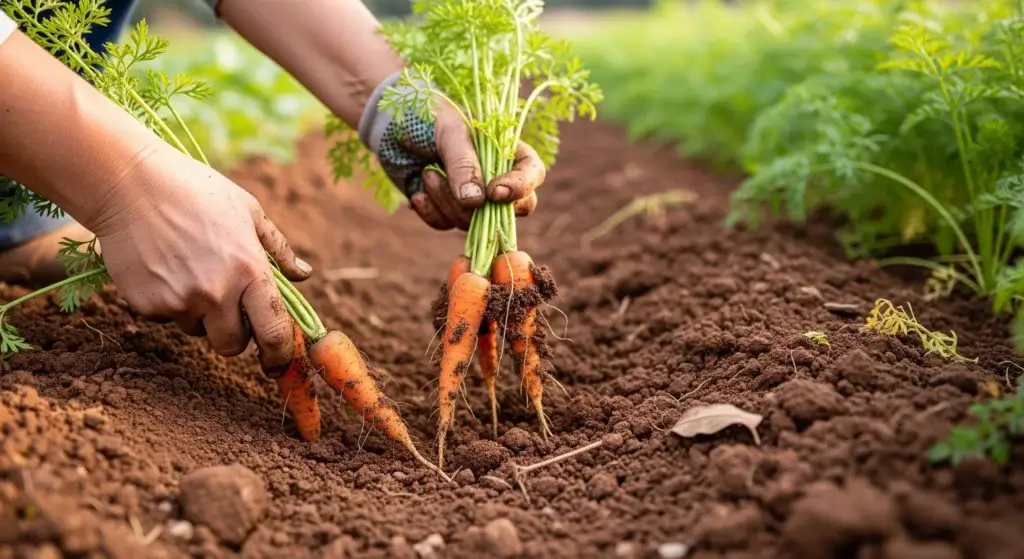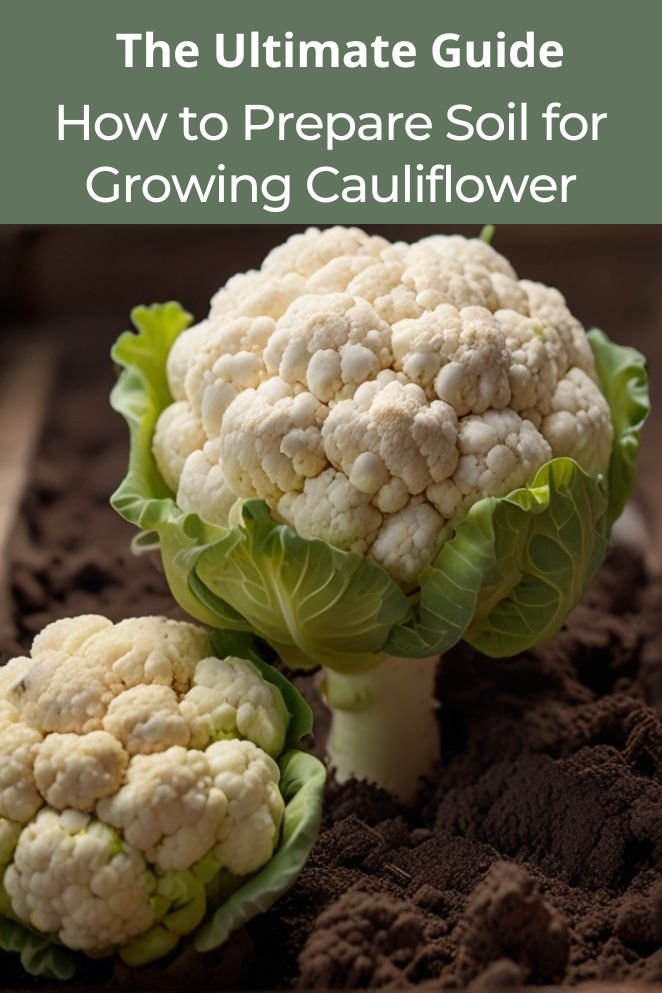
Cauliflower is a delicious and nutritious addition to any garden, but it can be finicky when it comes to soil.
With the right conditions, cauliflower can thrive, but with the wrong soil, it can struggle to grow.
In this article, we’ll explore what makes great cauliflower soil, how to build the perfect soil mix, and provide additional tips for optimal soil prep.
What Makes Great Cauliflower Soil?
To cultivate thriving cauliflower plants, it’s essential to provide them with the optimal soil conditions.
Here’s what makes great cauliflower soil and why each factor is crucial:
Richness
Cauliflower plants are heavy feeders, meaning they require ample nutrients to support their growth and development.
Fertile soil enriched with organic matter, such as compost or well-rotted manure, provides a steady supply of essential nutrients.
Organic matter also enhances soil structure, promoting better root growth and nutrient uptake by the plants.
- Read also: Preventing Cauliflower Bolting: Keep Your Cauliflower Blooming
- Read also: Defending Your Curds: Organic Pest Control For Cauliflower
Drainage
Proper drainage is vital for cauliflower plants to thrive.
Excess water around the roots can lead to root rot and other moisture-related issues, compromising plant health and productivity.
Well-draining soil allows excess water to escape freely, preventing waterlogged conditions and ensuring adequate aeration of the root zone.
pH Level
Cauliflower plants prefer slightly acidic soil with a pH ranging from 6.0 to 7.0.
Maintaining the correct pH level is crucial for nutrient availability and uptake by the plants.
In acidic soils, essential nutrients like phosphorus and potassium may become less available to the plants, negatively impacting their growth and development.
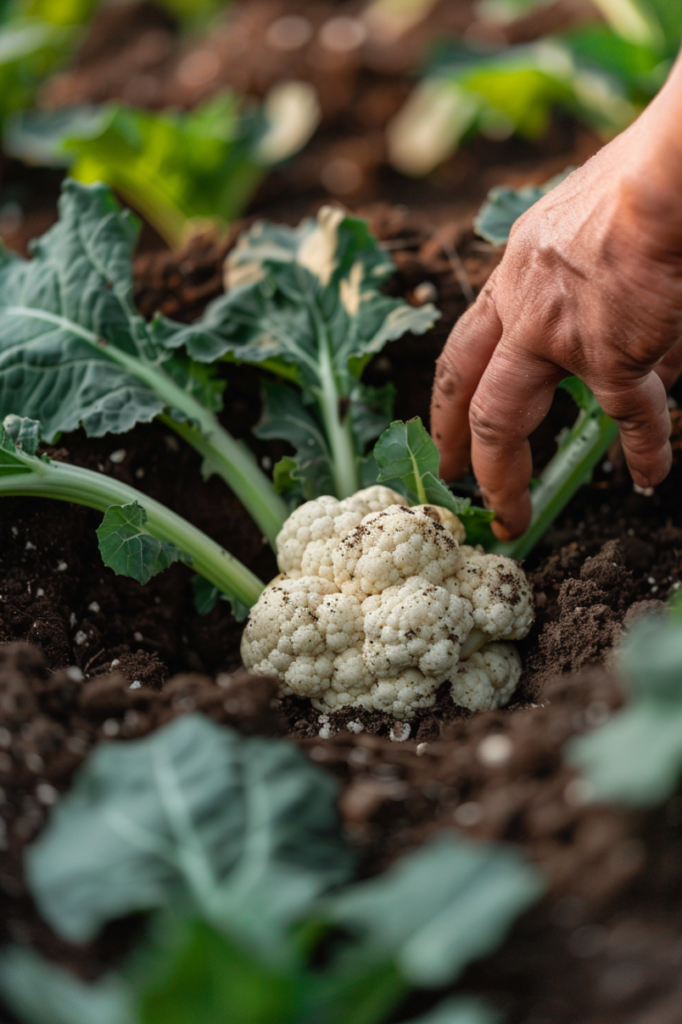
Building the Perfect Cauliflower Soil Mix
Building the perfect soil mix for cauliflower plants requires careful consideration of various factors to ensure optimal growing conditions.
Base
Begin with a high-quality garden loam as the foundation of your soil mix.
Loam offers a balanced combination of sand, silt, and clay particles, providing excellent drainage, aeration, and moisture retention.
This ensures that the soil can adequately support cauliflower root development while allowing excess water to drain away efficiently.
Organic matter
Next, enrich the loam with generous amounts of organic matter to boost fertility and improve soil structure.
Organic matter, such as compost, aged manure, or composted leaves, serves as a valuable source of nutrients for cauliflower plants.
Additionally, it enhances soil aggregation, promoting better root penetration and nutrient uptake.
Incorporating organic amendments into the soil also helps to retain moisture, ensuring consistent hydration for healthy cauliflower growth.
Drainage Enhancers (Optional)
If your native soil tends to be heavy clay and prone to poor drainage, consider incorporating drainage enhancers into your soil mix.
Adding coarse materials like sand or perlite can help break up dense clay particles, improving soil structure and enhancing drainage.
This allows excess water to drain freely from the root zone, reducing the risk of waterlogged soil and preventing root rot.
While optional, drainage enhancers can be particularly beneficial in areas with heavy rainfall or compacted soils.

Testing and Amending
To ensure optimal growing conditions for your cauliflower plants, it’s essential to conduct soil testing and make necessary amendments to address any deficiencies or imbalances.
Soil testing
Begin by conducting a soil test to assess the pH level and nutrient content of your soil.
Soil testing kits are readily available at garden centers or through agricultural extension services.
Follow the instructions provided with the soil test kit to collect samples from different areas of your garden and submit them for analysis.
Soil testing provides valuable insights into your soil’s current conditions, allowing you to make informed decisions about amendments.
Amending for pH
Once you receive the results of your soil test, determine if your soil pH falls within the preferred range for cauliflower cultivation (pH 6.0 to 7.0).
If the pH is outside this range, adjustments may be necessary to create an optimal growing environment for your plants.
For raising pH (too acidic)
If your soil is too acidic (below pH 6.0), it may be beneficial to raise the pH level.
Add lime to the soil following the recommendations provided in your soil test results.
Lime helps neutralize acidity and brings the pH into the desired range for cauliflower growth.
For lowering pH (too alkaline)
If your soil is too alkaline (above pH 7.0), you can lower the pH by incorporating organic matter such as composted pine needles or elemental sulfur.
These amendments help acidify the soil and bring the pH down to the optimal range for cauliflower cultivation.
Exercise caution when using elemental sulfur, as excessive application can harm plants.
Nutrient amendments
Based on the nutrient levels identified in your soil test results, supplement with any missing nutrients to support healthy cauliflower growth.
A balanced fertilizer formulated for vegetables can provide essential nutrients such as nitrogen, phosphorus, and potassium.
Follow the recommendations provided in your soil test report to determine the appropriate fertilizer application rates for your garden.
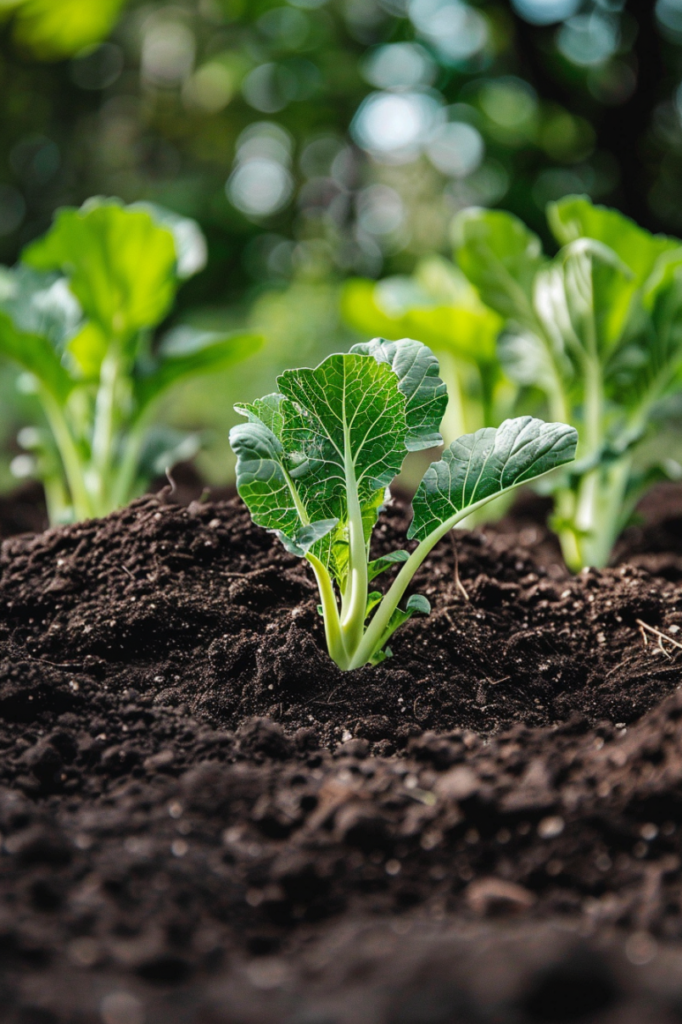
Additional Tips for Optimal Soil Prep
In addition to soil testing and targeted amendments, incorporating these additional tips into your soil preparation routine can further optimize conditions for successful cauliflower cultivation:
Raised beds
Consider utilizing raised beds for growing cauliflower, especially if your native soil is less than ideal.
Raised beds offer several advantages, including better control over soil quality, improved drainage, and enhanced soil warmth.
By filling raised beds with a customized soil mix tailored to cauliflower’s needs, you can create an optimal growing environment that promotes healthy root development and robust plant growth.
Lasagna gardening (optional)
Explore the option of lasagna gardening as a no-dig method for building fertile soil over time.
This innovative approach involves layering organic materials such as cardboard, leaves, grass clippings, and compost directly on top of existing soil.
As the organic materials break down, they enrich the soil with nutrients, improve soil structure, and encourage beneficial microbial activity.
Crop rotation
Implementing a crop rotation strategy is essential for maintaining soil health and preventing the buildup of soilborne diseases.
Rotate cauliflower with other plant families each growing season to avoid depleting specific nutrients from the soil and minimize the risk of disease outbreaks.
Avoid planting cauliflower in the same location where other brassica crops, such as cabbage or broccoli, have been grown in recent years.
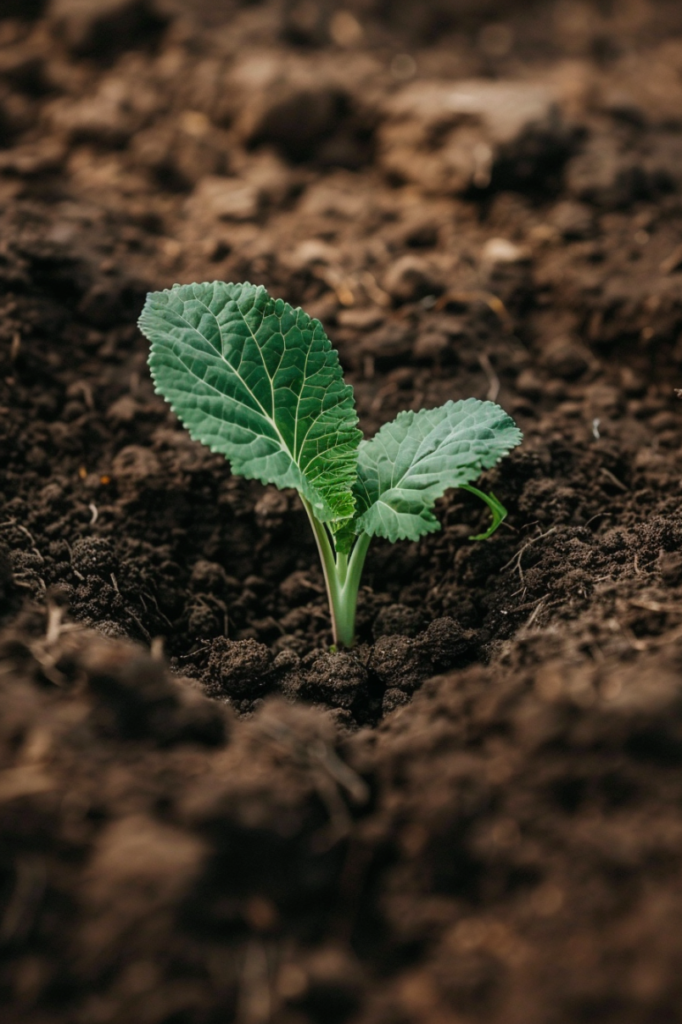
- Read also: DIY Cauliflower Row Covers for Garden Protection
- Read also: Taming the Curd: Identifying Common Cauliflower Problems
Conclusion
Growing cauliflower requires careful attention to soil conditions.
By understanding what makes great cauliflower soil, building the perfect soil mix, and following additional tips for optimal soil prep, you can create a thriving environment for your cauliflower plants.
Remember to test and amend your soil as needed, and don’t be afraid to get creative with your soil mix.

